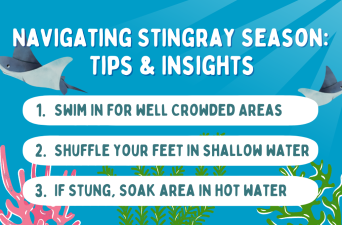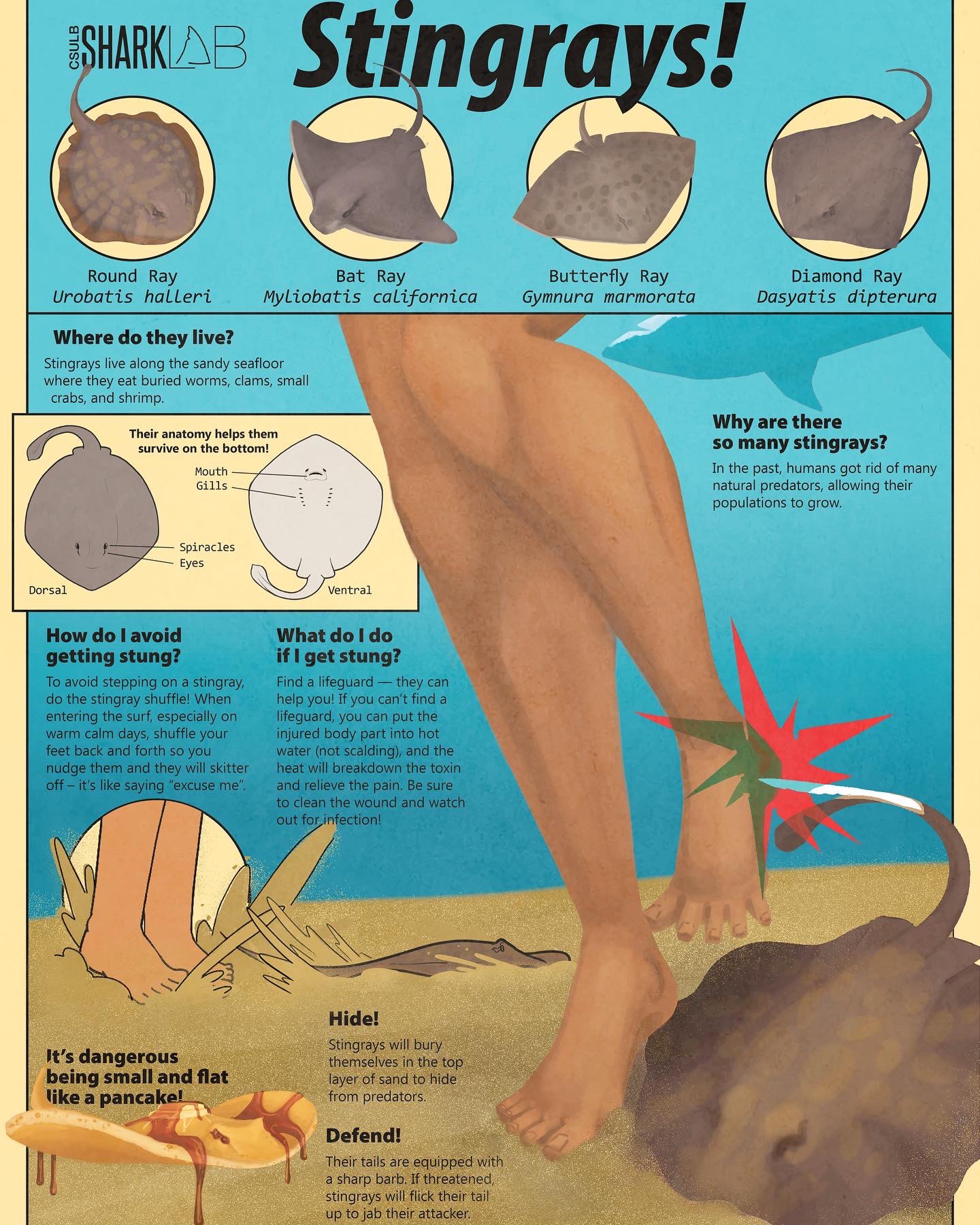Navigating Stingray Season: Tips and Insights

As the temperature rises and beachgoers flock to the shores, it's important to be aware of the marine life sharing the waters. One such creature that requires our attention during this time is the stingray, a flat-bottomed fish recognized for the distinctive barb on its tail. While encountering these fascinating creatures can be a highlight of coastal explorations, it's crucial to understand their potential hazards and how to navigate stingray encounters.
Anatomy and Toxicity
Stingrays possess a unique feature – a barb on their tail. This barb is encased in a toxic sheath, which can deliver a painful sting when it comes into contact with human skin. The toxin it carries can cause considerable discomfort and potential complications if not treated promptly.
Stingray Sting Symptoms
The aftermath of a stingray encounter is often characterized by an intense throbbing pain that arrives in waves. This pain can radiate and even lead to leg cramping. Although the initial shock can be distressing, understanding the appropriate steps for treatment is essential.
Immediate Treatment
In the event of a stingray sting, swift action can mitigate the discomfort. The recommended approach is to soak the affected area, usually the foot, in hot water. The water should be kept at the highest tolerable temperature without causing burns to the skin. This soaking process typically lasts between one to two hours, gradually alleviating the pain.
Further Medical Care
While hot water treatment often provides relief, it's important to note that a deep puncture wound may remain after the barb has been removed. If this wound exhibits any signs of infection, seeking professional medical care is advised. Redness, swelling, or discharge are indicators that prompt attention is necessary to prevent complications.
Prevention Measures
The old adage "an ounce of prevention is worth a pound of cure" rings true in the case of stingray encounters. To minimize the risk of stings, consider the following measures:
-
Crowded Swimming Areas: Opt for well-frequented swimming zones. Stingrays are often deterred by the presence of human activity, making these areas less likely to be inhabited by these marine creatures.
-
The Stingray Shuffle: When navigating shallow waters, adopt the "stingray shuffle." This involves keeping your feet flat on the sea bottom and shuffling them as you move. The vibrations generated by this movement are likely to alert stingrays and prompt them to swim away.
-
Stay Vigilant: While enjoying the ocean, remain observant of your surroundings. Stingrays can sometimes be spotted gliding gracefully in the shallows. Maintaining a respectful distance is crucial for both human safety and the preservation of marine life.
As the coastal season beckons, remember that sharing the waters means coexisting with the creatures that call it home. By staying informed about stingray behavior, symptoms of stings, and preventive measures, you can make the most of your beach experience while ensuring your safety and that of these remarkable underwater inhabitants.

